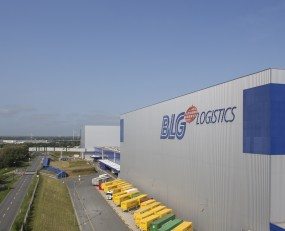
Germany’s BLG Logistics has hit the headlines in the past few weeks as it continued to grow its logistics services, but the spotlight should also be on its capital structure. In fact, at a time when its core markets remain under pressure, net leverage remains particularly high.
The group, controlled by Bremen municipality which has a 50.4% stake, said on June 22 that it had acquired domestic rival “Fortagroup with retroactive effect” from January 1.
The deal, the size of which was undisclosed, “represents a major milestone in the BLG strategy of systematically expanding its forwarding services division”, it said, adding that the acquisition includes the assets of Logfortra and Infortra, whose operations focus on international shipping and air freight activities as well as overland transport, project management, and other logistics services.
In addition, BLG also announced on June 29 that it has agreed on a new joint venture with Italian car ro-ro shipping and logistics operator Grimaldi Group, which had acquired a 50% stake in Calabrian automobile terminal Gioia Tauro via “its associated company Automar”. Previously, BLG operated the terminal alone.
With almost 8,800 employees, and an implied personnel cost ratio of just over 50% in 2015, BLG operates three units: automobile, contract and container, none of which were immune to the downturn.
Once €297.5m of ‘reconciliation’ adjustments are excluded at group level, total sales rose 6.3% to €938m year-on-year, but EBITDA and operating income fell.
Before reconciliation adjustments are considered, the core contract division generated €478.8m of turnover, up 9.6% year-on-year. Yet EBIT was just €1.7m above break-even at operating level, down from €7.2m in the prior year. With 4,280 employees, or 48.6% of the group’s global workforce in 2015, the unit focuses on car parts, industrial, retail and seaport logistics as well as related services catering the offshore wind industry.
Meanwhile, the automobile business – the second-largest unit by revenues – turned over €461.6m before reconciliations, up 2.9% year-on-year, with EBIT surging 20.9% to €18.5m from €15.3m one year earlier.
The unit includes “complete worldwide logistics for finished vehicles from the manufacturer to the dealer”, spanning the “handling, storage, technical processing, and forwarding & transport logistics by rail, road and inland waterway”.
The smaller container business, unadjusted sales of which were €295.7m in 2015, grew 4.5% year-on-year, while EBIT rose 13% to €43.4m.
While earnings before taxes of €29.7m were essentially flat year-on-year at group level, cash flows have become more problematic, with operating cash flow coming in at €10.7m versus €34.5m in the previous year.
Notably, free cash flow declined by €40.5m “due to the increase in outflows from investment activities and the drop in inflows from continuing operations”, the company pointed out, while also noting that it maintained a pay out in line with the previous year, when it distributed 92% of earnings.
With net debt of €299m, up 14.9% year-on-year, its net leverage hovers around 4.4 times, based on trailing EBITDA of €68.1m. Its 24.4% free float is relatively small, but nonetheless net indebtedness could be a critical value driver, although BLG downplays any risks associated to its debt load.
“There are currently no potential risks to the company’s continued existence such as excessive indebtedness, inability to make payments or other risks,” it said in its annual results, while highlighting “significant risks from the continuing sovereign debt crises in the US and Europe and from geopolitical unrest with its effect on the real economy.”
Interim results for the six months ended June 30 are due on September 30.
Source: Transport Intelligence, July 20, 2016
Author: Alessandro Pasetti